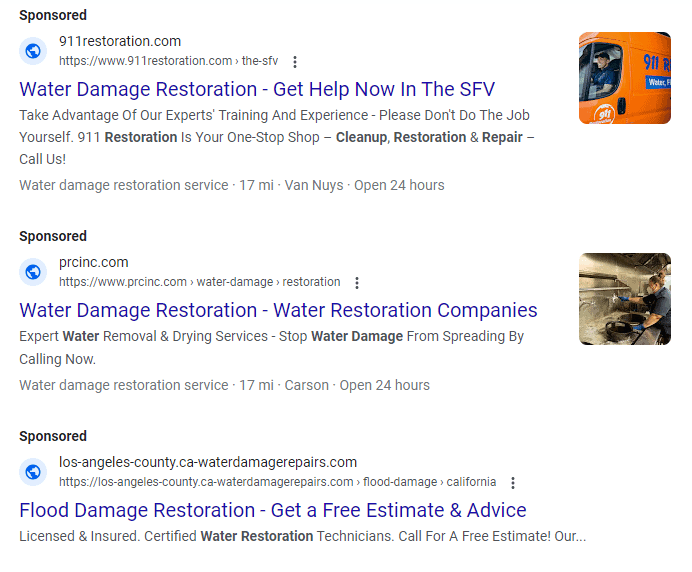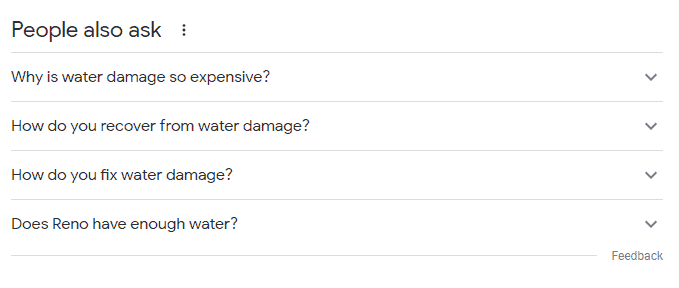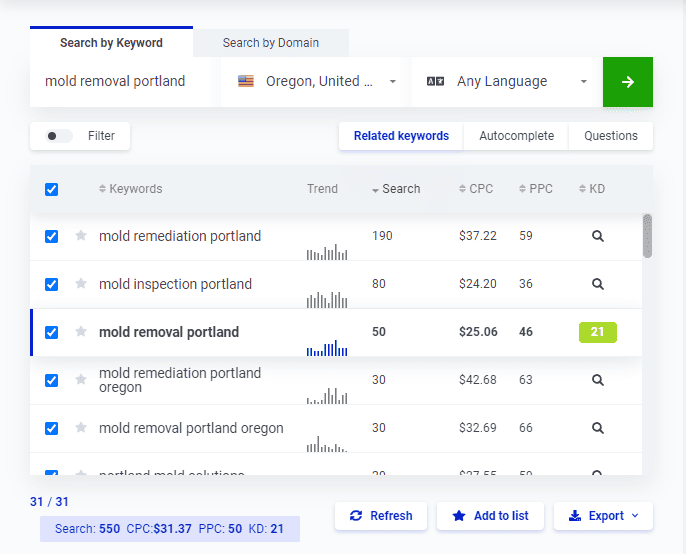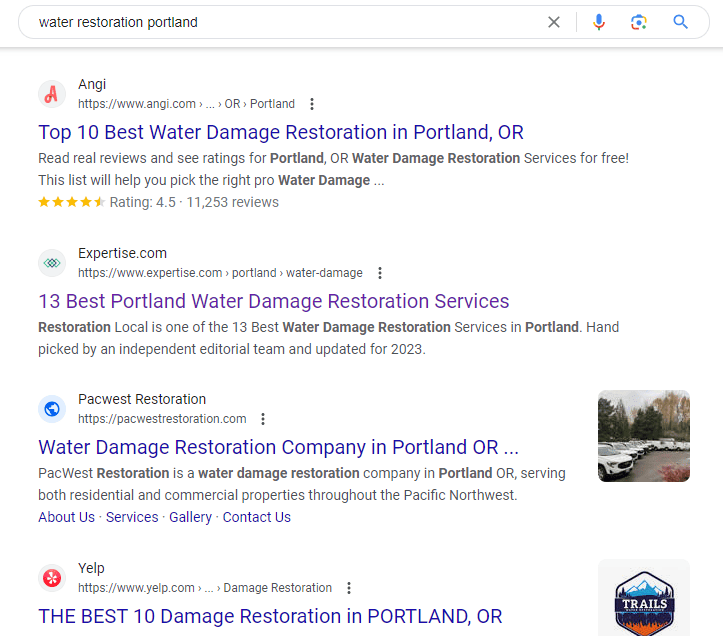Search Engine Marketing Strategy for Restoration Companies - The Monopoly Approach

Article By Bogdan Krstic
Fact-checked and written by a human ✔️
As a local business owner in 2023 (or beyond, depending on when you read this), you’ve likely been called, pitched, and sold local SEO services around 1,000 times approximately.
Now, I want you to tell me what did these freelancers/agencies try to sell you exactly.
You likely have no clue. Which is okay. You just heard the pitch and hung up the phone. Saw a new email and ignored it.
On the other hand, you may have been on sales calls and even purchased services in the past.
In that case, what were you sold?
What did those agencies do for you?
Design a new website? Wrote new content? Did they work on your Google Business Profile?
How about ads? Social media?
Write down a list. Do it quickly before moving on.
Did it work?
Not at all? A little bit? Yes, it did?
What I want to show you today is the approach to SEO that every business ought to have.
It’s not just about the website. Or the Google Business Profile. It’s about leveraging every single asset you have online.
I just made up the term called the Monopoly approach. Used only to grab your attention. The term itself is completely ridiculous but the concept behind is what I want you to take in.
Most of the stuff I’m about to show you are easy and can produce great results if done consistently.
How Do Search Engines Work
Exactly as you may think. You Google a question and you get an answer. It’s not just Google, though. There’s also Bing and Yahoo.
Even with a very small market share, these two search engines are still important to keep in mind.

- Google – 88%
- Bing – 7%
- Yahoo – 3%
- DuckDuckGo – 2%
And others take the rest.
Of course, when doing search engine marketing (SEM) for your restoration company, most of your focus should still be on Google since they, well, have the most market share.
Let’s now see how Google works. We’ll keep it relevant to finding local restoration companies. We don’t care about how Google works for restaurants, although it’s somewhat similar.
Google has multiple elements of page one they display to users, AKA multiple pieces of real estate.
Right at the top, there are ads:

These ads you see here usually show right at the top.
Then we have text ads, or “classic” Google ads we’re all used to.

And just for context, this outline of page one is the same for all markets across the country. Regardless of the city you’re based in.
Right below come the Google Business Profiles. Google ranks the top 3 results on Maps above websites:

Then we have the “People also ask” section:

And then come the websites.
After that, there are either also ads on the bottom of page one (which no one clicks on) or the page two starts.
Now, it’s not even enough to just be on page one with your website anymore, at least not in low positions.
Here’s how clicks are distributed among these different “assets” on page one:
- The number ONE website result gets 30-40% of all clicks
- Each Maps result gets 15-20% of all clicks
- The rest is spread across other assets on the page, including ads and other websites in top positions, like Yelp, Angi’s, and Thumbtack
I see, Bogdan, but how would this equate to $$$?
Here is the part you’ve been waiting for.
Like what you see? Book a free 30-minute consultation call!
How Much Money You Can Make With Search Engine Marketing
Take a look at this picture:

Let’s say that you’re ranking #1 for the term “water damage restoration Portland”.
On the screenshot above (which was taken inside Mangools, a prominent SEO market research tool), we can see that around 110 people search for this term every month (just under the “Search” column name).
Let’s say that you’re the #1 company for this search term. This would equate to around 44 visits per month. When you add all of the searches from the similar keywords you can see in the picture, that’s around 260 monthly searches * 40% = roughly 100 visitors.
The typical conversion rate is 2-5% across most industries, which simply means the percentage out of all website traffic that takes the action you want (a call on the phone per se), and I’ll take 5% as a baseline for your calculation since water restoration is an emergency service.
This means that out of 100 clicks, five people will call you. The close rate, given the urgency of the service, would be 40-50%. Let’s take a 50% close rate.
That’s three sales per month and an additional $5,000-$10,000 in revenue for your business per month, or $60,000-$120,000 per year.
Now, we wouldn’t stop at just ranking #1 for water restoration. No, no, no, we’d take a full swing instead, targeting mold, fire, and all other services in the niche that you can provide.
Head back over to the image for a moment. An interesting piece of data is the “CPC” right next to “Search”. It pretty much shows that Google advertisers are paying around $90 just to get a single visit from people searching this keyword.
This means that this traffic makes the advertisers enough money to be able to afford to pay $90 for every click they get from someone searching “water damage restoration Portland”. The same is true for other keywords.
With SEO, you’re not paying anything for those clicks, yet you’re reaping the most benefit (no Google ad will ever get as much traffic as the top ranking site, which is also shown in the study I linked above).
And this is just water restoration. Then there’s also mold:

Now, apply the same calculations I did for water restoration with mold, and you’ll see just how much you’re missing out on.
What is the Monopoly Approach
This data was just dedicated to the website ranking #1 on Google. We still haven’t even mentioned:
- Ranking in Maps
- Ranking on Yelp, Angi’s, and Thumbtack
- Taking a spot in the “People also ask” section
- Text ads and Local Services Ads
THIS is what the Monopoly approach is. Taking as much real estate as possible on page one.
Do ONLY one of these and you’ll get results. But imagine if you’d done all of these.
Let’s not stop with calculations, just so you can see the true possibilities.
Google Business Profiles
Each Google Business Profile (GBP) gets around a 5% conversion rate, give or take. That means that out of 100 views your GBP gets, you should get 5 actions taken – a call to your business, a website visit, or a direction request.
Ranking on Maps for keywords like the ones we presented above, sticking to the Portland example, would equate to hundreds of views for your business per month (if not thousands).
These were just the main keywords. There are plenty of other less common, less searched keywords. Check it easily by going to your GBP (if you have one already) and just looking at the “Performance” section.

After you’re done admiring my incredibly photo-editing skills, click where the arrow shows. Scroll a bit down and you should see this:

On the right, you’ll see your search terms. And then the exact number of times you’ve been displayed for them.
I blurred the search terms in this case because all of them were branded for this specific GBP. But you should see, if not right away but at least when you scroll down, terms like “water damage restoration”, “water damage restoration near me”, “restoration company (and then your city name)”, and things like that.
That would be it! GBPs are incredibly valuable; some would debate even more than your actual website, and I mention numerous reasons why throughout this website excessively.
But these are just two pieces of the puzzle.
What about other assets?
Wait, what assets? Aren’t a website and GBP more than enough?
They are… that is, only if you don’t follow the Monopoly approach.
We want to take the MOST spots, AKA the most real estate, that we can.
How do you win the Monopoly game?
You’ve played the game, right?

Each player gets an equal dollar amount, and they need to use it to buy land on the game board fields, which are cities like New York, London, and Tokyo. And then they build houses and charge rent to any player who steps on their fields.
How do you win this game?

Buy as much real estate as possible.
A similar case goes here.
But how do I do this?
Paid Ads
First, there are paid advertising channels like text ads and Local Services Ads.
These provide a great ROI when done right and over a long enough period of time.
Average ROI for Google search ads is 8:1. So for every $1 spent on text ads, you’ll get $8 back.
That is, of course, the average, meaning you can also go below or above this threshold.
Text ads get approximately 11% of all traffic on search results.
Then, Local Services Ads get approximately 14% of all traffic that searches a local service keyword. Restoration companies can take advantage of these ads, and you’ll simply pay per lead instead of per click like you would with text ads.
So, that is how many? Four spots that your business would take on page one?
That is essentially grabbing 50-55% of ALL potential traffic.
But wait, how?
Well, remember our percentages:
- Top organic spot, AKA website, gets 30-40% of all clicks, but let’s use 30% for the calculation just for good measure
- Top Maps spot get 15-20% of all clicks, but let’s use 15%
- Since there are usually three Local Services Ads displayed, and they combined get 14% of all clicks, that means each would get around 5%
- The same goes for text ads, except that the number is around 3%
- 30%+15%+5%+3%=53%
So over half of ALL potential clients searching for YOUR services in your local area would be yours. Then your website, reviews, and overall brand have to actually sell them on the service, but that’s another story.
Looking at our Portland example, that would be 110*53%=58 potential clients viewing your business each month and $7,500-$15,000 of additional monthly revenue.
But we still wouldn’t stop there.
Lead Generation Listings
You see, it usually happens that 3-4 websites in local search results are among the lead generation crowd:
- Yelp
- Angi’s
- Thumbtack
- Expertise
- And others…
And don’t be wrong; these sites are trusted and get a lot of traffic.

And guess who takes three out of top four spots for websites in the Portland example:

Does this mean you can’t be #1?
No, absolutely not.
But the point of this is to be #1 but also be displayed on the pages that are #2 and #3 – in this case those pages being Yelp, Expertise, and Angi’s.
Yelp is a search engine, similar to Google.
Yelp listings can also get reviews, like Google listings.
In other words, ranking a listing on Yelp pretty much involves doing similar stuff that you would do to your GBP listing.
Yelp also has options to run ads.
What about Angi’s?
Well, the listing itself is free, and customers can view your number, website, and leave reviews there.
However, you’ll have to pay if you want to rank the highest (Angi’s Ads) or receive leads from Angi’s (Angi’s Leads). Angi’s Leads customers have very mixed opinions, many of which are complaints.
It’s up to you to test whether Angi’s paid products are worth it for you. The same goes for Yelp paid products.
But the listings themselves are free, and for the Monopoly approach, that’s all we want. In an ideal world, you’d be running ads on both platforms, but whether that would be profitable for your business is a whole other story.
It costs nothing to rank those free listings in their search engines, and that’s what we essentially want to do.
If you DO want to test their paid products, go for it. This further enhances your position in your local market and makes you the dominant force.
Anything Else?
Yes!
What you can theoretically also do is claim a spot in the “People also ask” section.
Remember this one? The one that displays questions Google users ask and then answers from different websites.
This section gets around a 3% click-through rate.

Why would you want traffic from this section?
Because if you help answer people’s questions for free, they’d be more inclined to call your business than the business they never had any interaction with.
You claim these spots by answering these questions on your website and then doing a little bit of technical work called Schema.
Conclusion - What to Do Next?
This has all been great, really, but how do I actually do this?
Well, you can either:
- Manage your SEO and ads yourself, and read our free blogs and watch videos for tips
- Or you can schedule a call with us to see how we can help you achieve your goals
It’s all dependent on how far you want to go with your search engine marketing strategy.
Do you want just a piece of the pie?
Or do you want the largest piece of the pie?
To become a business that customers are just forced to call because you’re everywhere and have the most ratings.
It’s not that hard to do this.
So let’s do it. Click the button below to schedule a free consultation (and no, this is not your typical marketing BS – on this call, I’ll actually give you some insights that you can use)!

Bogdan is a restoration SEO expert with over 3 years of experience helping businesses grow. He is passionate about the restoration niche because of how underserved it is, and RepairSprout is the business he started and works on with joy every day. When he is not helping restoration companies grow, he works out, takes long walks, and watches Suits, which is completely ironic given how rarely he dresses up in a suit himself.
